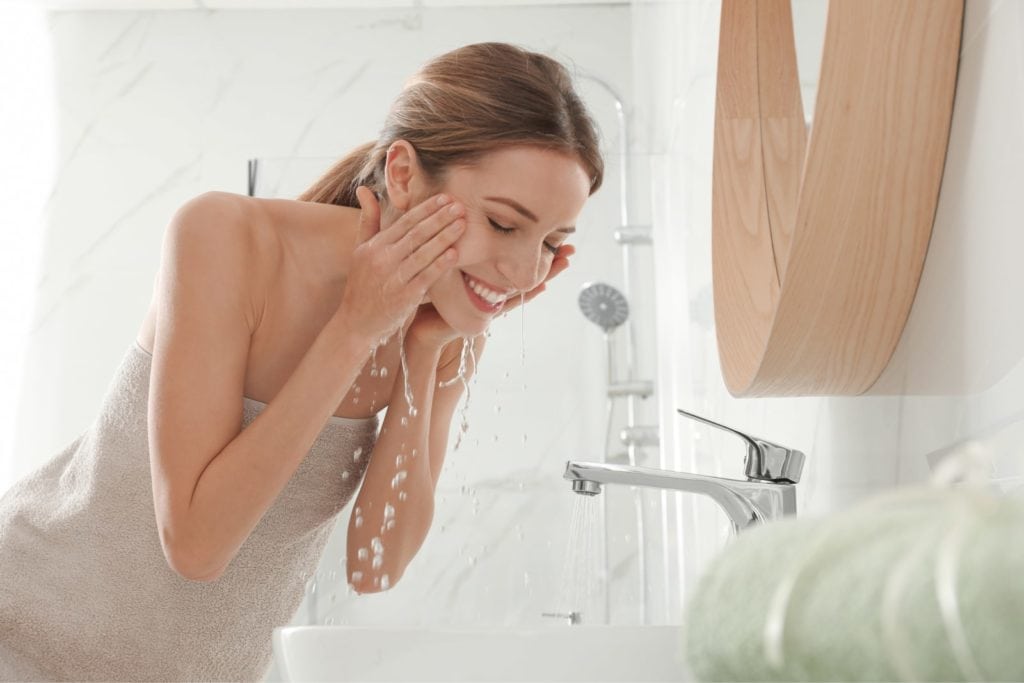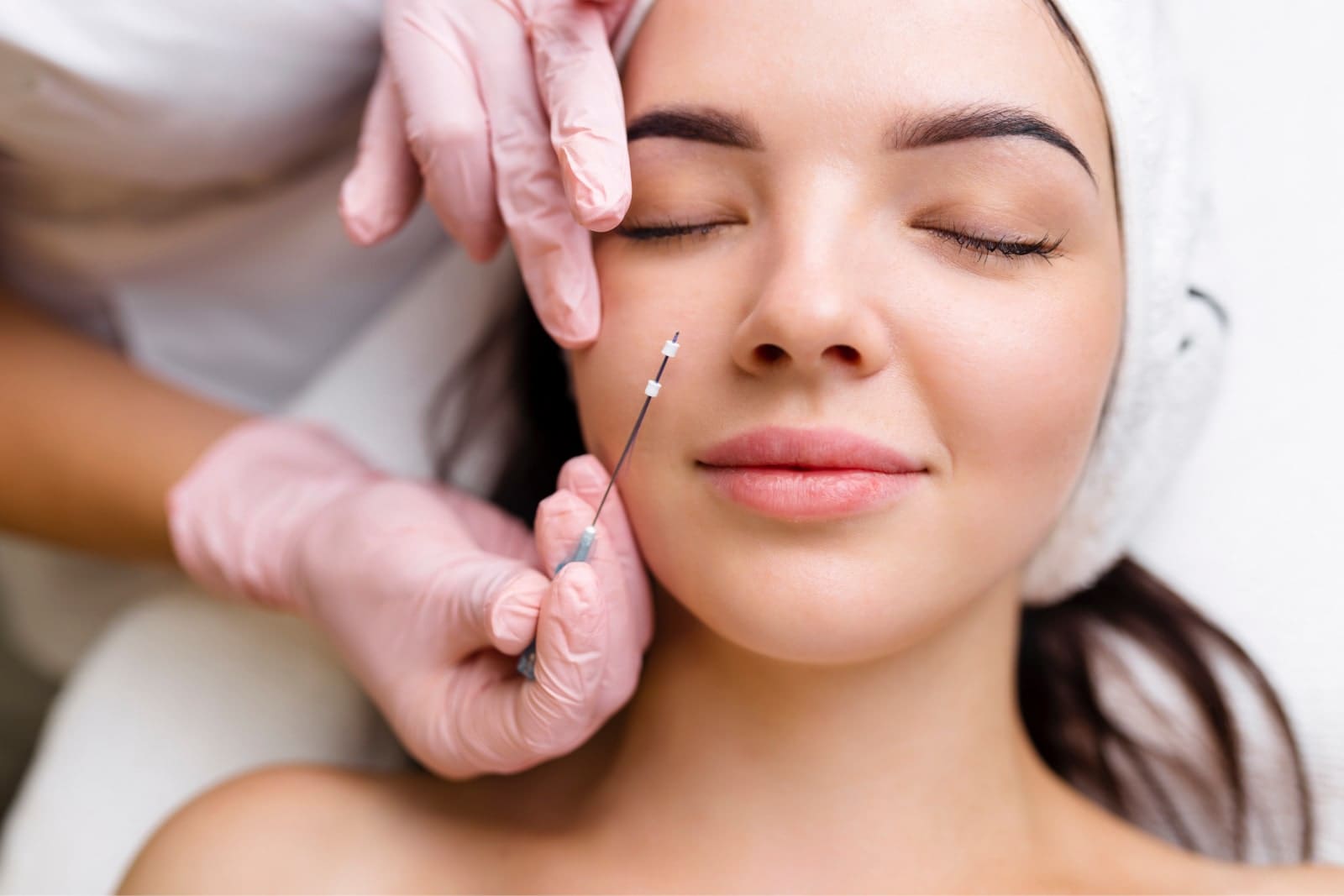Chemical peels are often called skincare saviors and instant refreshers, thanks to their ability to exfoliate the skin and leave it healthy and glowy. Chemical peels, which range from light to deep, offer various skin benefits when used on the face, hands, neck, and chest. They can do everything from reducing the appearance of fine lines and wrinkles to clearing up blemishes and evening out the skin’s tone so it is brighter. But just as important as how a chemical peel works is the chemical peel aftercare, which can make all the difference between good and great results. Here’s everything you need to know to take care of your skin after a chemical peel.
What are Chemical Peels?
Chemical peels are a skin exfoliating treatment that relies on any one type of acid or a combination of them, like alpha hydroxy acids (AHA) such as glycolic or lactic acid, salicylic acid, or stronger trichloroacetic acid. There are even deep chemical peels, the strongest type of peel available, that employ high levels of TCA and even phenol, which must be done under anesthesia.
All chemical peels deliver active ingredients into the skin. Lighter peels work on the superficial layers, while deep chemical peels go deeper into the skin, usually the middle layer, to remove damaged skin cells. The acid-based peel stays on the skin for a few minutes. There may be some stinging, burning, or discomfort during the treatment (the more potent the peel and the more concentrated the acid, the more you may feel), which means the treatment is working. Then, the peel is neutralized, and the treatment is complete.
The goal of a chemical peel, no matter how strong it is or which acids are used, is to safely and gently lift away dead skin cells that can clog the pores. Ridding the skin’s surface of a buildup of dead skin cells allows it to appear smoother, softer, and reflect light properly for a healthy, natural glow. Plus, fewer dead skin cells on the surface means there’s less to clog up pores, which can cause breakouts.
Caring for the Skin Immediately Post-Peel: The First 24 Hours
Today’s chemical peels are more advanced than in years past for better, more reliable, and more predictable results. Rather than leaving the skin red, peeling, and flaky, a chemical peel can lightly refresh the skin with little or no downtime.
After a noninvasive procedure, like a light peel, your skin may be slightly red for a few hours and feel itchy or tight. The skin will also be extremely sensitive after a chemical peel, so it’s crucial not to expose the skin to the sun and always use a 30+ SPF sunscreen, which will protect against UVA and UVB rays. Sun exposure can inflame the skin, leading to discoloration, hyperpigmentation, and potential scarring. Veer on the side of caution and avoid the sun for at least two weeks, if not longer, and wear sunscreen daily. You should also avoid exposure to heat sources like saunas and spas, which may induce swelling and inflammation.
It’s best not to wash the skin after a peel to optimize the treatment. Ideally, you’ll want to wait a few hours after a peel before washing your face. Some peels have different instructions and require no washing for 12 to 24 hours. It is essential to use a gentle, hydrating face wash without acids and lightly massage it onto the skin without tugging or pulling on it. Also, avoid scrubbing the skin since it is sensitive after a chemical peel.
Days to Glow: Navigating the Next Few Days Post-Peel
It’s normal for there to be some minor dryness, sunburn-like redness, or even patches of skin flaking, which is simply the dead skin shedding itself from the surface. By day two to three, the skin can slough and shed more than the first few days. The level of peeling depends on the intensity of the peel and the acids used. With mild peels, expect gentle sloughing; skin can peel more dramatically with stronger peels. It may be tempting to touch and peel the skin, but let the skin shed on its own.
Since the skin will likely be dry, chemical peel aftercare instructions are important to follow. That includes avoiding topical acne creams, retinol and retinoids, exfoliators, and exfoliating acids for the first five days. It’s also best to avoid drinking alcohol for the first few days, which can dehydrate the body and skin, and instead drink plenty of water. Keeping the skin moist and applying moisturizer throughout the day is always recommended, as is wearing sunscreen.
You may see some improvement in the first few days after the peel, which will continue to improve over the following week. Then, once the peeling has subsided and you are past the one-week mark, you can slowly reintroduce your active skincare products.
Maximizing Your Results: Tips for Long-Lasting Radiance and Health
Once your skin has fully healed from the redness and peeling, your skin should be super smooth, clear, bright, and radiant with less noticeable pores. The skin usually looks its best about 7 to 10 days after a chemical peel. And you can keep it looking that way by taking good care of your skin.
Wearing sunscreen daily is the most critical part of caring for post-chemical peel skin care. Reapplication of sunscreen is necessary every few hours to protect the fresh, new skin that is emerging. Most skin experts recommend wearing SPF 30 or higher.
Equally as important as sunscreen is moisturizing and hydrating the skin from the inside out and outside in to strengthen and protect the skin barrier. Topical skincare products with ceramides and hyaluronic acid keep the skin well-hydrated since it may be compromised following a chemical peel.
Any post-peel changes seen in the skin are not permanent and require maintenance treatments with repeat peels and other skin treatments as needed. The result of each type of peel differs, but most last, on average, from a few weeks to a few months to up to one year, depending on your skincare habits.
Ecobel’s Commitment to Your Skin: Guiding You Through Every Step
Chemical peel aftercare is serious, and our post-peel instructions are held to the highest standards. Following our chemical peel aftercare instructions and nurturing your skin is crucial for putting your skin on the road to healthy recovery. During your consultation, we will discuss the best protocol to follow and any product recommendations that will benefit your skin.
Since each of our chemical peels is customized to your skin and needs, our skin experts will also tailor their advice based on the peel you receive and what your skin will best benefit from. It’s important to discuss with our team what works for your lifestyle and budget so we can make the right peel choice for you and your skin.
Follow-up appointments are also important to gauge your skin’s progress and address concerns. By staying on top of how your skin responds to a chemical peel, we can customize the treatment at any time or incorporate other skin treatments to help you achieve your ultimate end goal.





